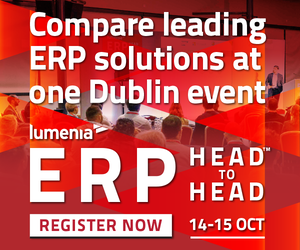With a strong theme of liquid imagery, the idea is to make information assets frozen in existing structures and applications more available. The thinking is to allow the re-use and re-organisation of data and services without the need for coding.
BEA has identified a need for information in everything from ERP and CRM to asset management systems to be made available to other applications and services in an easily configured manner, without the need for coding.
“Companies can often have information locked up in applications only really accessible to people who know how to use those applications” said Peter Stanley, regional vice president of UK and Ireland for BEA. BEA through the AquaLogic family, will enable companies to “liquidise information to make it more available”, continued Stanley. Something of a departure from their Java specific past, BEA’s new family is “built around open standards and new technology” said Stanley. “We believe a new category has emerged called Service Architecture” said Stanley.
It is the infrastructure which sits above applications like Oracle Financials, Siebel and PeopleSoft that allows you to free up assets in enterprise applications. The BEA AquaLogic product family is an innovative suite of open, service-oriented software designed to help businesses move beyond application silos and vertically integrated ‘software stacks’, to a new world order of horizontally integrated “Service Networks” that quickly deliver business, IT, personal and professional services to improve enterprise productivity. With BEA AquaLogic, we are also offering customers a unified service infrastructure that supports both .NET and Java environments’ said Alfred Chuang, chairman and CEO of BEA.
The vision is a bold one and BEA is betting heavily on it, but it is a position supported by research. BEA worked with the IDC to poll 1300 companies who provided feedback on SOA readiness. Based on the responses, IDC has sized the potential market at $9 billion by 2009.
The AquaLogic family is named for the inheritance from BEA’s venerable WebLogic and the liquidity theme. The initial launch is four products in three lines, namely Data, Security and Messaging.
When asked for an example of the kinds of services possible with the new range, Peter Stanley gave the following of a car manufacturer who may have a fleet of their own products as used by employees. Traditionally, when the cars would have been sent off to an auction house during their replacement cycle, AquaLogic services would allow the asset management systems of the car manufacturer to interface with the logistics systems of an Ebay to bring the cars to potential buyers. ‘Two trusted brands would collaborate at the Internet service level to establish a new and innovative channel to market’ said Stanley. However similar benefits may be seen for internal services as permissions for IT services can be linked to payroll, building access and HR to allow unified sources for the management of all information relating to an employee.
Existing BEA customers also provide illustration of the applications for the Aqualogic philosophy. The Prudential in the UK conducted a survey and found that in their services they had 10,000 pages of specification and design documentation, 7,000 code lines, 10,000 test cases and 35,000 test conditions. “They now have a Service Architecture problem” said Stanley, “they need to place all this in a repository and manage it, which is what we have built with the AquaLogic family.”
The key aspect of the AquaLogic thrust is what BEA refers to as composition versus coding. Through graphic interfaces, the various systems are integrated through rules rather than code. “At the services layer, you have business analysts, not coders, looking at business process rules” said Stanley, “there is no coding, it is composition and rules based.” “The idea is to compose through a drag’n’drop, rules-based engine” continued Stanley.
With the open source offerings becoming stronger and feature rich, the perennials have had a hard time. Linux, Apache (with Tomcat), MySQL and PHP (the LAMP stack) have chipped away at the giants to establish themselves as major forces. With a product set defining a new niche, BEA hopes to strike a lead in an area that the open source developers may not have the resources to enter just yet. With BEA’s reputation, Aqualogic may not seem such a gamble. However, the success of late of open source solutions in meeting business needs while retaining the usual benefits, means that it may not be long before a new acronym signals an open source Service Architecture.







Subscribers 0
Fans 0
Followers 0
Followers